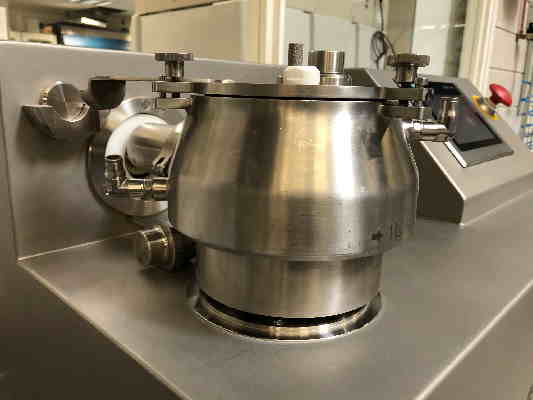Mixing of powders is considered an art: in contrast to liquids, powders often do not behave as a continuum. Furthermore, powders can be free-flowing but they also can be cohesive, i.e. more energy should be applied to make these particles move. If we then add to this that also the particle size, the density, and the shape of the various components can differ, this all makes mixing powders not at all straightforward. As a consequence, mixing solid materials requires a deeper understanding of the materials, the materials properties, and the working principles of the mixing equipment used. Powder mixing can be normally considered as spontaneous and compared to the ease of fluid mixing, particulate systems will only mix as a result of shaking, tumbling, vibration or other mechanical methods.
Three mechanisms have been used in solids mixing: convection, diffusion and shear. In convection mixing, masses or group of particles transfer from one location to another. In diffusion mixing, individual particles are distributed over a surface developed within the mixture, while in shear mixing groups of particles are mixed through the formation of slipping planes developed within the mass of the mixture.
The movement of particles during a mixing operation can also result in an opposite mechanism that may probably reverse the mixing process and is known as segregation of powder mixtures. When particles with significant different densities are mixed, it can be observed that the denser particles tend to settle to the bottom of the mixture. Meanwhile, if the coarse and fine particles are set in motion, the fines to segregate from the larger ones. Therefore, quality control for the mixing process is key to see and understand if any undesired segregation occurs.
A typical solids mixing process can be considered similar to a chemical reaction trying to reach an equilibrium state, once the mixing and de-mixing mechanisms reach a state of equilibrium, the final product can be considered as a homogeneous mixture. In order to measure the degree of homogeneity, sampling representative sub-lots of the mixture is crucial. The accuracy analysis of the mixture is greatly influenced by several factors including the method of sampling, the number of samples, the size of the samples and the location of each sample in the bulk material from where the sample has been taken. It can be concluded that mixing clearly is not an easy process in the powder and solid area.
In our field testing area, we have different types of mixing equipment for mixing powders from diffusion mixers such as cube mixers from 2-12 liters mixing volume, via convective mixers in the range of 5-20 liters mixing volume, up to high shear mixers in the range of 1-6 liters mixing volume. The presence of a variety of mixing equipment enables to mix free flowing powdered materials up to very cohesive materials in a wide range of mixing volumes. By introducing a high shear mixer, high energy can be applied to each batch, which results in very short mixing times and high levels of process flexibility. High shear mixing is available for use in a wide range of industries, from food, beverage and dairy to personal care, biotechnology and pharmaceuticals. High shear mixing can achieve a homogeneous mixture, especially for lumpy and agglomerate materials than will not effectively mix in e.g. a diffusion-based cube mixer.
The cube mixers we use are in stainless steel but also in a transparent version; the latter allows a visual impression of the mixing process and could also visually inform on the potential of segregation of the powdered product, which can negatively impact on the mixing quality.
Coupled to our opportunities for product characterization, e.g. particle size analysis and segregation analysis, we can offer a full evaluation of your mixing process.




